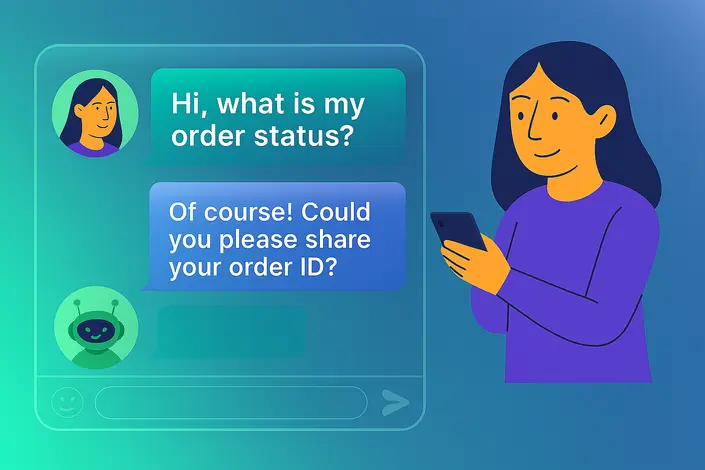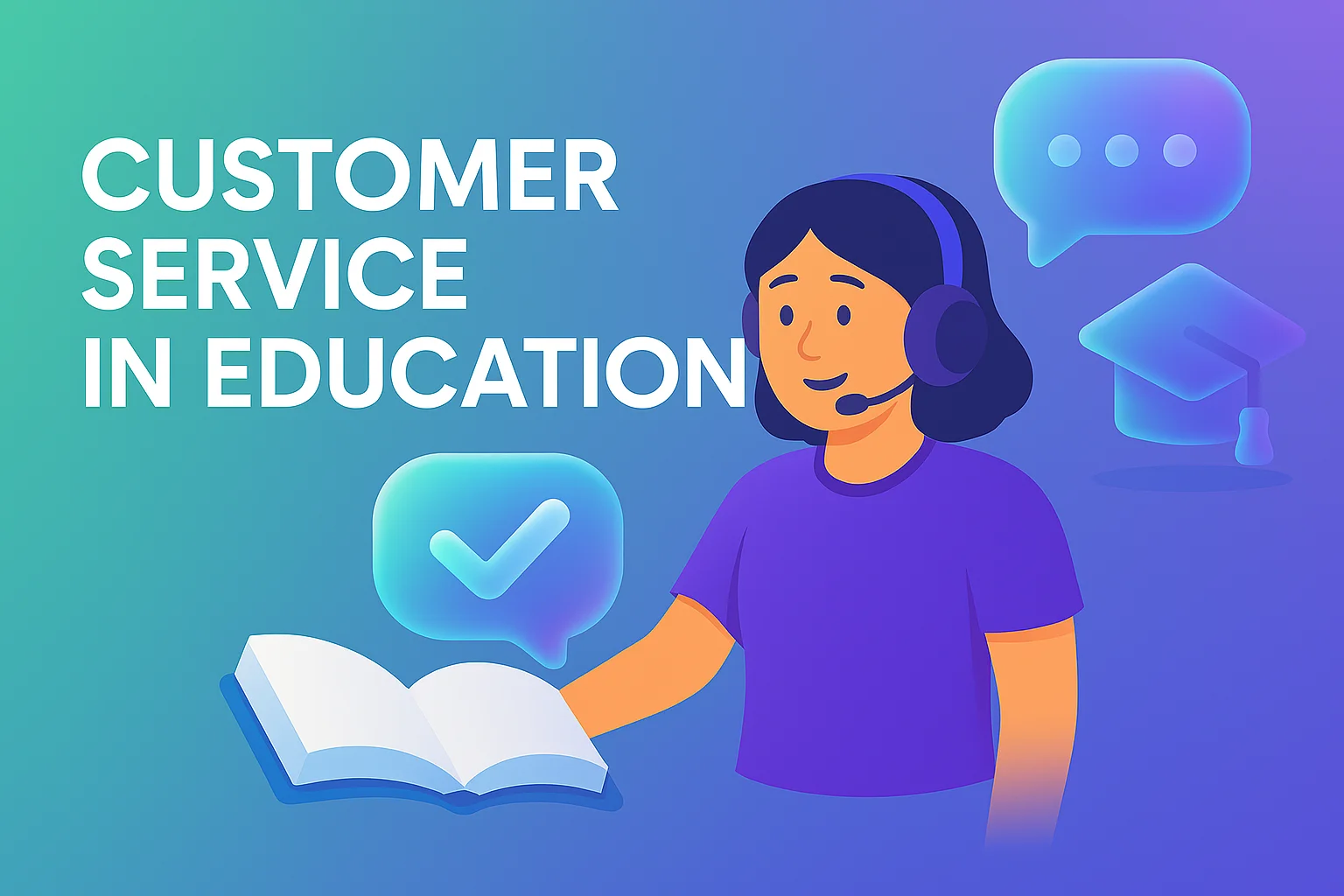Creating a Customer Feedback System For Business Growth
- January 30, 2024
- 13 mins read
- Listen

For customers, experience matters more than the quality of products or services offered. It matters so much that 32% of customers may stop doing business after one bad experience, according to a study by PwC.
What does that suggest?
It suggests that,
- You should understand how customers perceive their products and services.
- You should be aware of the overall brand experience customers have with your business.
- You must gauge customer satisfaction at each journey stage.
All this is key to identifying and addressing areas for improvement.
This is where the customer feedback system helps. It ensures your business does not miss opportunities for improvement. Without customer feedback, it’s not possible to bring enhancements to products or services. Similarly, a lack of insights into customer experience can also negatively impact operational processes.
More so, a business that does not have a proper feedback system in place may face reduced levels of customer engagement. Such situations are never good for the health of a business as they can lead to higher customer churn rates and lower retention rates.
In this blog, we will explore the customer feedback system in detail, shed light on the framework, and understand the ways to manage feedback.
But before moving any further, let’s get started with the understanding of what customer feedback is…
What is Customer Feedback?
Customer feedback is any opinion, comment, or suggestion that customers provide to the business regarding their experience with the brand, or a product or service. This feedback is important as it helps businesses understand the levels of customer satisfaction and identify areas for improvement.
Businesses often use customer feedback to make informed decisions and improve their offerings. Analyzing and acting upon the feedback is vital for any business looking to address customer issues, meet expectations, and continuously improve their products or services.
While positive feedback helps reinforce successful practices, negative ones play a big role in helping businesses identify weak spots. It also helps in making the required changes to boost the overall customer experience. Effective feedback management is a vital aspect of building long-term relationships with customers.
What is a Customer Feedback System?
A customer feedback system is a structured approach that businesses employ to gather, manage, and analyze customer feedback. Such a system is essential for collecting insights into customer experiences and preferences. Using a customer feedback system is widespread in gauging customers’ satisfaction levels.
A business needs to devise a robust customer feedback system to understand how customers perceive their offerings and what improvements are needed. This system is a vital prerequisite for boosting the overall customer experience in the long run.
Key elements of a customer feedback system –
- A clear understanding of the improvement areas and objectives for collecting feedback
- Diverse channels for feedback collection together with ensuring ease of access for customers to share feedback
- Surveys and questions with relevant questions
- A well-devised mechanism for feedback collection in real-time and timely resolution
- Using tools for analyzing and evaluating customer data and getting patterns and trends
- Integrating feedback with CRM system and other data to get meaningful insights
Why Create a Customer Feedback System?
Creating a customer feedback system is something that cuts across industry verticals as it has huge importance for businesses. More so, it can potentially contribute to your business’s overall success and sustainability.
Let’s look at the importance of creating a customer feedback system –
- A customer feedback system offers detailed insights into customer needs and expectations. It helps businesses understand the preferences of customers and their satisfaction levels with products or services.
- The information, data, and opinions gained from customer feedback systems can be used to tailor products or services. This is how the delivery of customer service can be better aligned with needs.
- A business that seeks customer feedback and acts upon it can make great improvements to its products, services, or other offers, and achieve increased levels of satisfaction and loyalty. More so, active feedback collection often leads to better customer engagement and repeat business.
- Feedback collection and analysis are vital for any business looking to know its strengths and weaknesses. It also enables strategic decision-making as feedback gives ideas about the aspects resonating – or not – with customers.
- A business that acts upon feedback can make continuous improvements and address customers, resulting in improved retention rates and lowered churn rates. This situation can also result in the maximization of lifetime value for each customer.
- A sense of trust develops among the customers when their suggestions and feedback are worked upon by the business. When their voices are listened to and their issues cared for, it builds loyalty.
How to Create a Customer Feedback System?
Creating a customer feedback system is essential for businesses to collect, analyze, and act on customer feedback. This system can bring valuable insights about customers and pave the way for a customer-centric culture. More so, it has a big role in the continuous improvement of processes and operations.
Here is a step-by-step guide to creating a customer feedback system –
Step 1 – Define Your Objectives
When you set out to create a customer feedback system, the first step is to define the goals you want to achieve clearly. The goals you aim to achieve should align with your overall business objectives.
Step 2 – Determine the Feedback Channels
There are many channels for collecting customer feedback and you should choose them based on your business goals and priorities. Surveys, online reviews, social platforms, and feedback forms are some of the channels you can use.
Step 3 – Design Well-Structured Surveys
When designing surveys, the key is to combine a good mix of quantitative and qualitative questions. The main focus of your surveys should be on collecting data on the customer experience and service quality.
Step 4 – Choose the Right Feedback Tools
You will need the right tools for collecting feedback. The tools you choose should offer real-time insights for clear analysis. CRM systems and social media monitoring tools can help you a lot in collecting feedback, such as HootSuite, Sprout Social, etc.
Step 5 – Consider Integration with Business Systems
Integrating the feedback system with other business systems is essential when you want to get a holistic view of customer interactions. For the integration, you should consider the systems such as CRM and customer support platforms.
Step 6 – Develop a Feedback Action Plan
There has to be a proper feedback action plan in place that can turn customer inputs into actionable insights. The purpose of an action plan is to implement changes and enhancements based on the feedback gathered from customers.
Step 7 – Promote the Feedback System
A business should consider reaching out to customers and creating awareness about sharing feedback. This will encourage customer participation.
Step 8 – Monitor and Evaluate
The customer feedback system is a dynamic process where the focus is to monitor its performance regularly and check its effectiveness.
Understanding Customer Feedback System Framework
Implementing a customer feedback system framework is essential for leveraging feedback to enhance customer satisfaction. Without a framework, a business will not have a system to collect, analyze, and evaluate customer data. Such a framework outlines the key processes and technologies for acting upon feedback.
Here is a framework for a customer feedback system –
- Identify the objectives of the feedback system
- Define the metrics and KPIs for gauging customer experience
- Determine the channels of feedback collection
- Adopt a structured approach for feedback collection
- Arrange a centralized data storage system
- Leverage data analytics tools for insights
- Establish a closed-loop system
Benefits of Implementing a Customer Feedback Management Process
A well-implemented customer feedback management process can prove a big asset for the business. It has the potential to impact the overall business performance. More so, when your business has a structured process for collecting customer feedback, it finds it easy to understand customer expectations and exceed those.
Here are some of the key benefits of implementing a customer feedback management process –
- A well-defined process for feedback contributes to data-driven decisions which can result in improved products and services.
- Acting upon customer feedback can make a business responsive to customer needs, and such responsiveness can work as a catalyst for outperforming competitors.
- Customer feedback is a useful tool for strategic planning as it brings valuable insights and helps identify the areas for improvement for the business.
- A business that has a proper system and process in place for customer feedback finds it easy to adopt a customer-centric approach and develop a positive brand image over time.
- Feedback is often the first step towards customer-driven innovation that aligns with the market trends and fits well into customers’ needs.
- Data-driven decision-making is possible only when a business collects customer feedback and draws insights out of it.
- Customer feedback can form the basis for customer satisfaction as it brings information, data, and opinions on the levels of happiness with a business’s products or services.
- Marketing strategies can become more effective and more targeted when a business collects feedback and gets insights, therefore boosting the ROI on marketing investment.
Tips to Manage Customer Feedback
Customer feedback will serve its purpose only when you manage them well. When you effectively manage the feedback, it can lead to improvements to products, services, and overall processes. There are certain tips that you need to have robust feedback management and align the results with your business goals.
Here are the tips to manage customer feedback –
1. Define the Purpose
Before collecting customer feedback, you need to have a clear purpose and goals in mind. Whether you want to measure customer satisfaction or customer loyalty, make sure you have clear objectives in mind. Some companies may also collect feedback to understand the causes of churn or to analyze the weaknesses of products or processes.
To define the purpose, you need to ask yourself –
- What do you want to achieve with the feedback?
- What kind of data and information do you need?
- How to leverage customer feedback to the fullest?
2. Design the Feedback Process
Now that you have identified your goals, the next step is to determine the process for collecting customer feedback. With a proper feedback process in place, you can understand the methods and avenues for collecting data.
To design the feedback process, you need to consider these –
- What channels are best suited for collecting feedback
- What methods you will use to combine the collected feedback
3. Collect Feedback
What next after you have determined the purpose and process of feedback collection? Well, you should start collecting the feedback. You can use various tools to collect feedback, and may also use automation. No matter what route you take, the key is to get all the data in a centralized place for easy insights.
When you collect feedback, keep in mind –
- There will be both good and bad feedback
- Negative feedback can hold equal value as it will bring actionable insights for making changes
4. Organize Customer Feedback
Collecting feedback is as important as utilizing it for the action-oriented data and information it provides. The key is to organize the feedback effectively and leverage its full potential. When it comes to categorizing and organizing feedback, automation should be the right strategy.
5. Review and Analyze the Data
Now when the feedback is categorized, you can go a step further and review it. The idea is to analyze the data to identify trends and patterns. You can also use data analytics tools to get deep insights into customer preferences.
How Can Customer Feedback Improve Customer Service?
Customer feedback has a huge role in the delivery of great customer service. It helps businesses become aware of the needs, preferences, and behavior of customers and make changes to their service delivery.
Here are some of the ways customer feedback can improve customer service –
Identifying Areas for Improvement
When customers share feedback with the business, they often highlight the pain points or problems they face. A business can analyze the feedback and identify the areas where it needs to work to enhance customer service.
Getting Insights into Customer Preferences and Expectations
Customers feel happy when a business meets and exceeds their expectations. Feedback is always an opportunity for a business to understand what customer expectations are. Based on that, services and products can be tailored to meet customer needs effectively.
Understanding the Levels of Customer Satisfaction
Feedback is a very important tool for measuring the levels of customer satisfaction. A business that collects customer feedback regularly can monitor trends in satisfaction scores over time and understand the effectiveness of its service.
Devising Targeted Training Programs
A business can collect customer feedback to shape the way it trains its customer service representatives and employees. The feedback will bring to notice the issues and problems customers face and then targeted training can be devised to fix those issues promptly.
Motivating and Empowering the Customer Service Team
There can’t be a better way than feedback to empower and motivate the customer service team. The inputs from the feedback can be used to analyze and evaluate the performance of the team. This can set them up for improvement over time.
Bolster Your Customer Feedback Management System With the REVE Platform
Feedback is invaluable in the growth and success of an enterprise. The more a business commits to collecting and analyzing feedback, the better it can serve its better through improved performance.
At REVE Chat, we understand the value feedback plays in improving the value of service delivery. That’s why we bring a variety of engagement tools that your business can use to strengthen its customer feedback management system.
You can use our AI-powered chatbots to engage with customers, interact with them, and collect feedback. The bot can be used to automate various tasks across sales, support, and marketing. We have video chat software, co-browsing software, and a ticketing system for engagement and feedback management.
More so, you can add the bot with the live chat software and improve the quality of customer service. This way, you can offer hybrid support where the bot takes care of routine queries while human personnel handles more complex conversations for feedback.
With us, you can sign up and check how our tools can add great value to your customer feedback system.
Final Thoughts
Collecting and analyzing customer feedback often sets the foundation of growth for any business across the industry. That’s why it’s essential to have a robust feedback system in place to better understand customer needs.
With REVE Chat, you find the top engagement tools to gather feedback and know your customer’s issues inside out.











